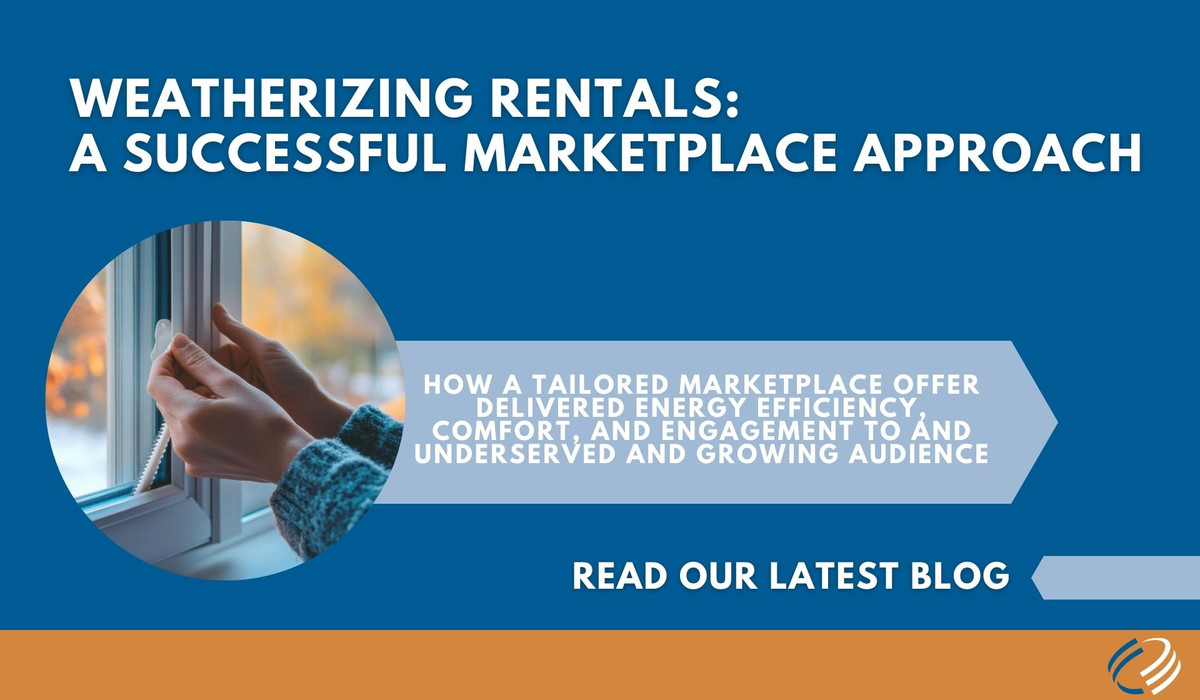How a Tailored Marketplace Offer Delivered Energy Efficiency, Comfort, and Engagement to and Underserved and Growing Audience
THE STORY
Insulation and air sealing products have been popular measures in state and utility efficiency programs since their inception in the 1970s. Over the decades, tens of millions of residents have benefited from the improved comfort, energy efficiency, and lower utility bills these measures provide. However, renters, who make up about 35% of the population, have been largely underserved.
The reasons are many:
• Renters tend to be more transitory and therefore harder to reach.
• Modifications to residences often require landlord permissions.
• Renter savings and participation rates are reduced when utilities are included in rents.
• Renters generally don’t take an active role improving their home’s performance.
Recognizing an opportunity to challenge the status quo surrounding renter engagement, an East Coast utility serving as a sponsor in a state-wide efficiency collaboration, initiated a renter targeted pilot campaign from January 15 to February 25, 2025. Their markeplace offer featured self-installed weatherization measures targeting renters. It was an enhancement to a 2024 program that also targeted renters with no-cost weatherization measures.
THE PRODUCT STRATEGY
Eight weatherization measures were made available on the utility marketplace. They were curated for their ability to improve renters’ in-residence comfort and ease of installation.
THE MARKETING STRATEGY
Several actions were taken to increase renter engagement, participation, and measure installation rates.
- Email Marketing: The East Coast utility utilitzed email marketing to specifically target renters within their service territory.
- No-Cost Participation: Measures were offered at no-cost to renter participants. These emails highlighted each measure’s pre and post rebate costs so renters could clearly understand the offering’s significant value prior to visiting the marketplace.
- Non-Energy Benefit Emphasis: Non-energy benefit messaging was highlighted in communications. For instance, campaign emails emphasized blocking drafts, noise, and improving water temperatures to enhance home enjoyment and year-round comfort.
- Easy Installation: Measures were chosen for their easy DIY installation without needing landlord approval. This empowered renters to choose products for their own needs and comfort.
THE RESULTS
The East Coast utility increased renter participation by 20% vs. the 2024 campaign, while also seeing a 30% increase in the number of orders placed. The other five sponsors in the state-wide efficiency collaboration saw similar increases during their 2025 campaigns. As a result of the positive engagement from this pilot, the utility will be launching an Enhanced Marketplace dedicated to this renter audience. In addition to weatherization products, It will offer advanced power strips, efficient showerheads, aertors, and programmable thermostats. While the goals for the 2025 pilot focused on engagement, the new program is emphasizing efficiency and orders from the Enhanced Marketplace will drive savings to the portfolio.
CONCLUSION
Based on recent surveys, Millennials (those born between 1981 and 1996) make up 17.2 million rental households and Gen Z (born between 1997 and 2021) is the only generation where the majority of adults rent vs. own their homes. The housing market is not just changing; it has already changed and is becoming increasingly populated with renters.
This campaign successfully engaged multi and single-family renters, helping them reduce their heating and cooling costs while increasing the comfort of their homes. It also taught them how easy energy efficient products are to install and enjoy.
Executing this renter-targeted weatherization initiative offered the utility valuable insights that confirmed this expanding and underserved demographic has a propensity to purchase additional efficiency products for their homes. As the number of residents who are renters increases, programs must consistently find effective ways to engage with this customer segment.
